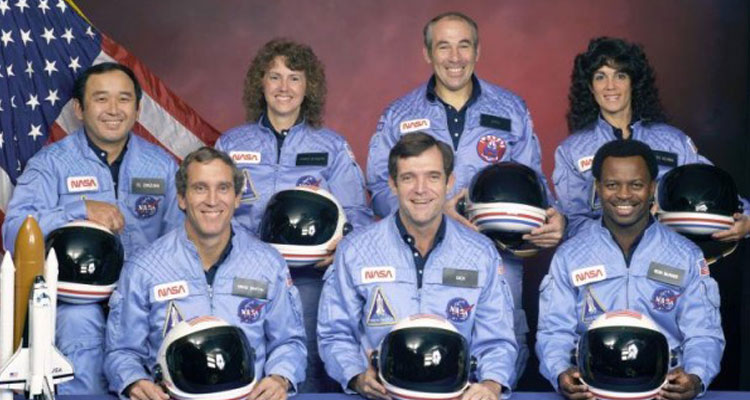Because shuttle launches had become routine after 24 successful missions, those watching found the explosion difficult to believe until NASA confirmed the accident.
January 28, 1986. On today’s date 30 years ago, the Space Shuttle Challenger (mission STS-51-L) exploded and broke apart 73 seconds into its flight, after an O-ring seal in its right solid rocket booster (SRB) failed at liftoff. The explosion led to the deaths of all seven Challenger crew members. The spacecraft disintegrated over the Atlantic Ocean, off the coast of central Florida at 11:38 EST (16:38 UTC).
The O-ring failure caused a breach in the SRB joint it sealed, allowing pressurized hot gas from within the solid rocket motor to reach the outside and impinge upon the adjacent SRB attachment hardware and external fuel tank.

This led to the separation of the right-hand SRBs aft attachment and the structural failure of the external tank. Aerodynamic forces then broke up the orbiter.

Bottom line: Posted in honor of the crew of Space Shuttle Challenger, which exploded and broke apart 73 seconds into its flight, after an O-ring seal in its right solid rocket booster (SRB) failed at liftoff. R.I.P Michael J. Smith, Dick Scobee, Ronald McNair, Ellison Onizuka, Christa McAuliffe, Gregory Jarvis and Judith Resnik.
Source: earthsky.org